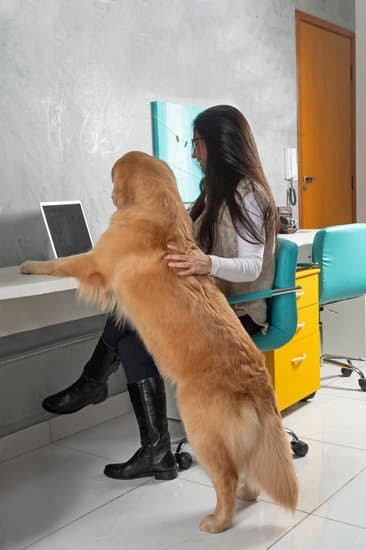Training your dog can be a rewarding and fulfilling experience, but it can also have its challenges. One training tool that has gained both popularity and controversy is the zap collar. In this article, we will explore how to train your dog with a zap collar, understanding its proper use for effective results.
A zap collar, also known as an electronic or e-collar, is a device designed to deliver low-level electric stimulation to your dog’s neck when activated. The idea behind using a zap collar is to provide immediate feedback to correct undesirable behavior or reinforce positive behavior. However, it is crucial to understand that using a zap collar requires responsible and ethical handling.
Proper use of a zap collar is essential for achieving effective training results without causing harm or distress to your furry companion. It is crucial to follow the manufacturer’s guidelines and consult with professional trainers who specialize in utilizing these collars correctly. Additionally, it is important to acknowledge the controversial nature surrounding the use of zap collars in dog training and consider alternative methods before resorting to this tool.
In the upcoming sections of this article, we will delve deeper into understanding the benefits of training your dog with a zap collar and address common misconceptions and concerns associated with their usage. We will also guide you through choosing the right zap collar for your dog, familiarizing yourself with training techniques, addressing behavioral issues, ensuring safety and ethical practices, and striking a balance between zap collar training and positive reinforcement methods.
By equipping yourself with comprehensive knowledge about how to train your dog with a zap collar and understanding its proper use, you can embark on a journey towards effectively communicating with your four-legged friend and cultivating desired behaviors while prioritizing their well-being. Let us dive into this intricate world of dog training together.
Understanding the Benefits of Training Your Dog with a Zap Collar
Improved Communication and Control
Training your dog with a zap collar can offer several benefits when it comes to communication and control. Using a zap collar, you can effectively communicate with your dog from a distance, ensuring that they understand specific commands or behaviors. This can be especially useful in situations where your dog needs to respond quickly, such as when off-leash at a park or during outdoor activities.
The zap collar allows for immediate correction, which can help reinforce desired behaviors and discourage unwanted ones. It provides you with a convenient way to address issues like excessive barking, jumping on guests, or chasing after squirrels. With consistent and appropriate use of the zap collar, you can establish clear boundaries and expectations for your dog.
Efficiency and Convenience
Another benefit of training your dog with a zap collar is the efficiency and convenience it offers. Unlike traditional training methods that may require physical intervention or constant supervision, a zap collar allows you to correct behavior even when you’re not right next to your dog. This is particularly beneficial for working professionals who may have limited time to dedicate to training or owners who struggle with physical limitations.
A zap collar also allows for quick correction without needing treats or clickers as rewards. While positive reinforcement techniques are essential in dog training, combining them with the use of a zap collar can expedite the process by providing immediate feedback. This combination helps reinforce desirable behaviors more efficiently, accelerating the learning curve for your furry friend.
Addressing Misconceptions about Zap Collar Training
It’s crucial to address common misconceptions and concerns associated with zap collars in dog training. Many people have reservations about using these collars due to their association with punishment-based methods or fear of causing harm to their dogs. However, when used correctly and responsibly, zap collars can be an effective tool without causing any long-term harm or distress to the dog.
It is important to note that a zap collar should never be used as the primary training method. Instead, it should be viewed as a supplementary tool to reinforce commands and behaviors that have already been taught through positive reinforcement techniques. By following this approach, you can ensure that your dog understands expectations and has a clear understanding of what is expected of them.
Additionally, it’s essential to select a high-quality zap collar that has adjustable settings and safety features such as automatic shut-off mechanisms. This ensures that the collar provides just enough stimulation to catch your dog’s attention without causing discomfort or harm. Always consult with a professional trainer or veterinarian for guidance on proper usage and appropriate training techniques when incorporating a zap collar into your dog’s training regimen.
Choosing the Right Zap Collar for Your Dog
When it comes to utilizing a zap collar for dog training, it is vital to choose the right one that suits your dog’s needs. With the plethora of options available in the market, it can be overwhelming to make the appropriate selection. This section will provide guidance on factors to consider while selecting a suitable zap collar, comparisons of different models, and tips for ensuring comfort and safety for your furry companion.
Factors to Consider
One of the crucial aspects to consider while choosing a zap collar is your dog’s breed and size. Different breeds have varying temperaments and energy levels, so it is important to select a collar with adjustable intensity settings that cater specifically to your dog’s needs. Additionally, considering the size of the shock electrodes is essential, as they should fit comfortably on your dog’s neck without causing discomfort or pain.
Comparing Zap Collar Models
To make an informed decision, it is beneficial to compare different zap collar models available in the market. Some collars are equipped with additional features such as waterproofing, remote control functionalities, and multiple training modes like vibration or sound. These additional features can enhance convenience and provide more training options tailored to your dog’s individual requirements.
Tips for Comfort and Safety
Ensuring comfort and safety should be paramount when using a zap collar on your dog. Look for collars made from durable materials that are gentle on your pet’s skin. It is also important to select a properly sized collar that fits snugly without being too tight or too loose. Regularly check the collar for any signs of wear and tear or irritation on your dog’s skin.
Getting Familiar with Zap Collar Training Techniques
Introduction to the basic zap collar training methods
When it comes to training your dog with a zap collar, it is essential to understand the basic techniques involved. Zap collar training works by delivering a mild electric shock to your dog when they exhibit undesirable behavior or fail to follow commands. However, it is important to note that the shock is not meant to cause harm or pain, but rather to provide an aversive stimulus that discourages unwanted behavior.
One common zap collar training technique is known as “negative reinforcement.” This involves using the zap collar to discourage your dog from engaging in specific behaviors. For example, if your dog tends to jump on people when greeting them, you can use the zap collar to deliver a mild shock whenever they jump. Over time, your dog will associate jumping with the unpleasant shock, and they will learn to refrain from doing it.
Explanation on how to use the zap collar as a reinforcement tool
Another important aspect of zap collar training is using it as a reinforcement tool rather than solely relying on correction. Positive reinforcement involves rewarding good behavior and can be very effective in conjunction with zap collar training. For instance, if you are teaching your dog to come when called, you can use both the zap collar and treats as reinforcements.
When your dog responds correctly by coming when called, praise them and give them a treat simultaneously with activating the collar’s vibration feature. This helps reinforce the desired behavior in a positive way while also utilizing the aversive stimulus of the zap collar.
It is crucial to remember that positive reinforcement should always be incorporated alongside zap collar training. The goal is not just to deter unwanted behavior but also to teach your dog what they should be doing instead. By reinforcing good behavior and offering rewards such as treats, praise, and affection, you create a positive association for your dog and make training more enjoyable for them.
Highlighting the importance of positive reinforcement alongside zap collar training
Incorporating positive reinforcement methods in conjunction with zap collar training is an essential aspect of achieving effective and humane results. Positive reinforcement techniques involve rewarding your dog for performing desired actions or following commands. Rewards can include treats, praise, toys, or any other form of positive reinforcement that motivates your dog.
By pairing positive reinforcement with zap collar training, you create a well-rounded approach that not only discourages unwanted behaviors but also teaches your dog what they should be doing instead. This combination increases the chances of long-term success and helps build a strong bond between you and your furry friend through trust and mutual understanding.
Remember, using a zap collar as the sole method of training can be ineffective and may even have negative consequences. It is crucial to strike a balance between aversive stimuli and positive reinforcement to ensure the best possible outcome for your dog’s training journey.
Step-by-Step Training Guide
Teaching basic commands to your dog is an essential part of their training, and using a zap collar can be an effective tool in achieving this. However, it is crucial to approach zap collar training with caution and ensure that you are using the collar properly to achieve the desired outcomes. In this section, we will provide you with a step-by-step training guide on how to teach basic commands using a zap collar.
Training your dog to sit
- Put the zap collar on your dog, making sure it is fitted securely but not too tight.
- Stand directly in front of your dog and hold a small treat just above their nose.
- Gently push down on their hindquarters while saying the command “sit.”
- If your dog doesn’t respond or struggles, use the lowest level of stimulation on the zap collar briefly while repeating the command “sit.”
- As soon as your dog sits, remove the pressure from their hindquarters and give them the treat as a reward.
Training your dog to stay
- Start by having your dog sit in front of you.
- Pull out a treat and show it to them without allowing them to take it.
- Say “stay” while taking a step back.
- If they start to move towards you or break the command, press and hold the button on the zap collar at a low level until they stop or go back into position. Release the button once they comply.
- Praise and reward your dog when they successfully stay in place for a specific period of time.
Training your dog to come
- Attach a long leash to your dog’s collar or harness before beginning this exercise.
- Get down to your dog’s level and say their name followed by the command “come.”
- If they do not start coming towards you immediately, gently tug on the leash while simultaneously using a low stimulation level on the zap collar. Release both once they start moving towards you.
- When your dog reaches you, give them plenty of praise and rewards to reinforce the behavior.
Remember, it is important to be patient and consistent with each training session. Using positive reinforcement alongside the zap collar will help build a strong bond of trust between you and your dog. It is also crucial to gradually decrease the reliance on the zap collar as your dog becomes more proficient in responding to commands.
In the next section, we will address common issues that may arise during training sessions with a zap collar and provide troubleshooting tips to help you overcome them.
Addressing Behavioral Issues with Zap Collar Training
Addressing behavioral issues in dogs is a common concern for many pet owners. While there are various training methods available, zap collar training can be an effective solution for certain behavioral problems.
It is important to note that zap collar training should only be used as a part of a comprehensive training program and should never be the sole method of correcting behavior. This section will discuss techniques to tackle common behavioral problems using a zap collar, such as excessive barking, chewing, or aggression.
One common behavioral issue that dog owners often face is excessive barking. Excessive barking can be disruptive and may cause tension with neighbors or within the household. When utilizing a zap collar to address excessive barking, it is essential to understand the source of the problem. Is your dog barking due to anxiety, boredom, or territorial instincts? Identifying the underlying cause will help determine if a zap collar is an appropriate tool for addressing this behavior.
To begin using a zap collar to address excessive barking, it is crucial to set clear boundaries for your dog. Teach them when it is appropriate to bark and when they should remain quiet. In situations where your dog is displaying excessive barking behavior, administer a low-level zap through the collar as soon as they start barking excessively.
The goal is not to cause pain but rather provide an attention-getting stimulus that interrupts their behavior. Combine the use of the zap collar with verbal commands such as “no,” “quiet,” or “enough” so that your dog associates these commands with stopping their excessive barking.
Chewing is another common behavioral issue among dogs, especially during their teething phase or out of boredom. Zap collars can be utilized alongside proper chew toy management strategies to redirect your dog’s chewing behavior onto appropriate items and away from furniture or personal belongings.
When you catch your dog engaging in destructive chewing behavior, give a verbal command such as “no” or “leave it,” and simultaneously administer a low-level zap through the collar. This association will teach your dog that chewing on prohibited items results in an unpleasant sensation, while chewing on appropriate toys garners praise and positive reinforcement.
| Behavioral Issue | Zap Collar Training Technique |
|---|---|
| Excessive Barking | Administer a low-level zap when the dog starts barking excessively, combined with verbal commands to associate stopping barking with the command. |
| Chewing | Utilize zap collars alongside proper chew toy management strategies by giving a verbal command and administering a low-level zap when the dog engages in destructive chewing behavior. |
| Aggression | Zap collars can be used to redirect and discourage aggressive behaviors by administering low-level zaps when the dog displays signs of aggression. |
Aggression is another behavioral issue that can be addressed through proper use of a zap collar. It is important to note that aggression should always be approached with great caution, and consultation with a professional dog trainer is recommended. When using a zap collar to address aggression, it is crucial to focus on redirecting your dog’s behavior rather than punishing them.
Administering low-level zaps when your dog displays signs of aggression towards another person or animal can help interrupt their behavior and redirect their attention elsewhere. However, it is important to remember that using positive reinforcement methods, such as treats or praise for good behavior, alongside this training technique will result in more effective outcomes.
Ensuring Safety and Ethical Use of Zap Collars
When using a zap collar for dog training, it is crucial to prioritize the safety and well-being of your furry friend. There are several measures you can take to ensure the ethical use of zap collars and minimize any potential risks or harm to your dog.
First and foremost, it is essential to have a thorough understanding of how the zap collar functions before beginning any training sessions. Familiarize yourself with the specific model you are using, including its settings and features. This knowledge will help you properly adjust the intensity level to suit your dog’s needs without causing unnecessary discomfort.
Additionally, always remember that a zap collar should never be used as a punishment tool. It is meant to be a form of reinforcement and should only be used to redirect unwanted behaviors or reinforce desired actions. It is crucial to provide clear communication to your dog so that they understand what they are being rewarded or redirected for.
Furthermore, consistency in training is key to avoiding confusion or distress for your dog. Ensure that all family members participating in the training process are on the same page regarding how and when to use the zap collar. Consistent commands, timing, and expectations will help your dog understand what behavior is expected from them.
To further promote the safety of zap collar training, closely monitor your dog during training sessions. Pay close attention to their body language and behavior, ensuring that they do not display signs of stress or discomfort while wearing the collar. If you notice any adverse reactions or if your dog becomes fearful or anxious, it may be necessary to reassess whether zap collar training is suitable for them.
Ultimately, responsible and ethical use of zap collars involves considering it as one tool among many in your overall approach to training. Positive reinforcement methods should still be implemented alongside zap collar training techniques. Combining rewards such as treats, praise, and affection will reinforce good behavior and further strengthen the bond between you and your dog.
| Safety Tips for Zap Collar Training | Ethical Use of Zap Collars |
|---|---|
| – Have a thorough understanding of the zap collar and its settings before using it on your dog | – Use the zap collar as a reinforcement tool, not as a punishment device |
| – Adjust the intensity level to ensure it is appropriate for your dog’s size and temperament | – Provide clear communication to your dog so they understand what behavior is being rewarded or redirected |
| – Be consistent in training commands, timing, and expectations | – Closely monitor your dog’s body language and behavior during training sessions to ensure they are not distressed or anxious |
| – Monitor your dog closely during training sessions to avoid any adverse reactions or signs of discomfort | – Incorporate positive reinforcement methods, such as treats and praise, alongside zap collar training techniques |
Balancing Zap Collar Training with Positive Reinforcement Methods
Training your dog with a zap collar can be an effective tool for achieving behavior modification, but it is important to balance this training method with positive reinforcement techniques. While a zap collar can provide immediate correction, positive reinforcement helps to strengthen desired behaviors and build a strong bond between you and your dog.
Positive reinforcement involves rewarding your dog for good behavior with treats, praise, or play. This method encourages the repetition of desirable actions and helps to create a positive association with obedience. It is crucial to incorporate positive reinforcement alongside the use of a zap collar to ensure that your dog understands what behavior is expected of them.
One way to balance zap collar training with positive reinforcement is by using the collar as a secondary or backup tool. Start by teaching your dog the desired behavior through positive reinforcement methods first. Once they have grasped the command, you can introduce the zap collar as an additional reminder or correction if they fail to comply.
For example, if you are teaching your dog to come when called, begin by rewarding them with treats and praise when they successfully come to you. If they ignore the command despite being trained, you can then use the zap collar as a gentle reminder.
It is also important to remember that every dog is unique and may respond differently to training methods. Some dogs may require more positive reinforcement while others may benefit from more frequent reminders through the zap collar. Observe how your dog responds during training sessions and make adjustments accordingly. The key is finding the right balance between using the zap collar for correction and reinforcing good behavior through positive methods.
By combining zap collar training with positive reinforcement techniques, you can effectively train your dog while maintaining their emotional well-being. This balanced approach ensures that your furry friend feels loved and motivated throughout their learning journey while still understanding boundaries and expectations. Remember that consistent practice, patience, and respect for your dog’s individual needs are essential in achieving successful training outcomes.
Conclusion
In conclusion, training your dog with a zap collar can be an effective approach if used correctly and responsibly. Throughout this article, we have discussed the proper use of a zap collar, highlighting its benefits and addressing common concerns. We have also provided guidance on choosing the right collar for your dog, familiarizing yourself with training techniques, and addressing behavioral issues.
It is essential to emphasize the importance of responsible and ethical use of zap collars. While these collars can be a valuable tool for specific training purposes, they should always be used in conjunction with positive reinforcement methods. Positive reinforcement helps to build trust and strengthen the bond between you and your dog while providing motivation for desired behavior.
Ultimately, achieving effective dog training with a zap collar requires finding a balance that suits both your dog’s needs and your preferences as an owner. Every dog is unique, so it is crucial to observe their reactions during training sessions and make adjustments accordingly. Patience, consistency, and compassion are key when using this type of training tool.
By understanding the proper use of a zap collar, considering your dog’s individual characteristics, and incorporating positive reinforcement techniques, you can create a well-rounded approach to help train your furry friend effectively. Remember to always prioritize their safety and well-being throughout the training process. With dedication and care, you can achieve successful dog training with a zap collar.
Frequently Asked Questions
How should I train my dog with a shock collar?
When it comes to training a dog with a shock collar, it is essential to approach it with caution and responsibility. Firstly, it is crucial to educate yourself thoroughly on the correct usage and understanding of the shock collar. Consult professional trainers or veterinarians who specialize in positive reinforcement methods and can guide you on how to properly introduce your dog to the collar. Start by associating positive experiences with wearing the device, such as offering treats or engaging in play while gradually introducing low-level shocks.
Take the time to understand your dog’s individual temperament and adjust the intensity of the shocks accordingly. It is important not to use the shocks as a form of punishment or aggression, but rather as a means of reinforcing desired behaviors. Always prioritize positive reinforcement techniques alongside using the collar.
Does training a dog with a shock collar work?
While some individuals claim that training a dog with a shock collar can be effective, it is essential to recognize that there are potential drawbacks and ethical considerations associated with this method. Studies have shown mixed results regarding its long-term effectiveness compared to other training techniques centered around positive reinforcement.
Additionally, the use of shock collars has raised concerns regarding the physical and psychological effects they may have on dogs. It is important to carefully evaluate whether this method aligns with your own principles and consider alternative approaches that focus on building a strong bond based on trust, respect, and reward-based learning.
How long does it take to train a dog with an electric collar?
The duration required to train a dog effectively with an electric collar varies depending on several factors, including the individual dog’s temperament, age, previous training experiences, and specific training goals set by their owner. It is important not to rush through training processes but instead adopt a patient approach that allows for proper learning and retention by your dog. Correctly introducing an electric collar often requires several weeks of dedicated effort consistently applied during training sessions conducted each day over time.
However, it is crucial not only to focus on using an electric collar but also incorporate other positive reinforcement methods like treats, praise, and play as part of a comprehensive training routine. Remember that each dog is unique and may progress at different paces, so being flexible and adaptable in your training approach will yield better results in the long run.

Welcome to the blog! I am a professional dog trainer and have been working with dogs for many years. In this blog, I will be discussing various topics related to dog training, including tips, tricks, and advice. I hope you find this information helpful and informative. Thanks for reading!





